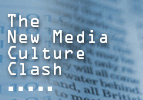



Unfortunately, faculty fear of multimedia technology may entrench a reliance on print-based argumentation (Westbrook 2006, 459). Given that the written modality has been the dominant one for so long, professors feel more confident grading written papers. Lacking experience or confidence in their ability to critically assess compositions that leave the print realm, teachers may be reluctant to accept multimodal compositions from students (NCTE 2005, Metros & Woolsey 2006, Westbrook 2006) — much less engage in composing such scholarship for themselves.
Additionally, a lack of detailed knowledge about copyright laws as well as fears of potential infringement on the copyright of others may contribute to a reluctance to accept digital media compositions (Westbrook 2006, 470). In many cases this hesitancy to embrace digital media originates in a lack of faculty exposure to these new technologies. In this vein, Susan Metros and Kristina Woolsey identify two key impediments — difficulty in locating the professional resources or support to produce high quality visuals as well as a lack of time to learn and lack of available consultants to teach them digital media techniques (2006, 80).
While we have a well-developed system to teach reading and writing, we have no comparable pedagogy regarding sound, images, and video (Faust 2006, 136). Unfortunately, exposure does not equate to mastery. Metros and Woolsey explain that “the visual revolution today has produced its share of novice design and overestimated competencies. Students, both immersed in and enthused about visual imagery, often lack the skills, precision, and depth, as well as the education, that allow them to be masters of the medium” (2006, 80).
The only thing we have to fear • A profess(or)ed reluctance • Visual (il)literates • Works cited • Home